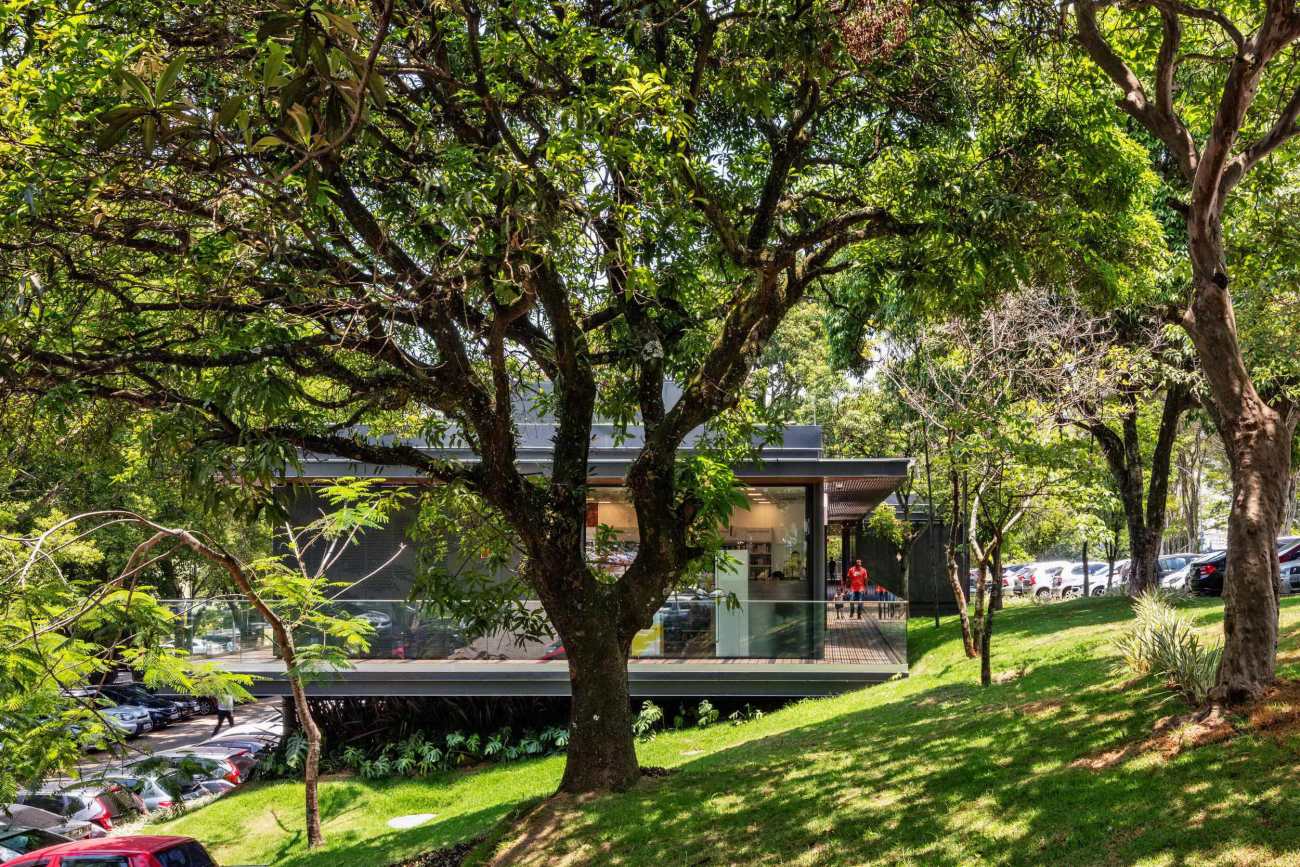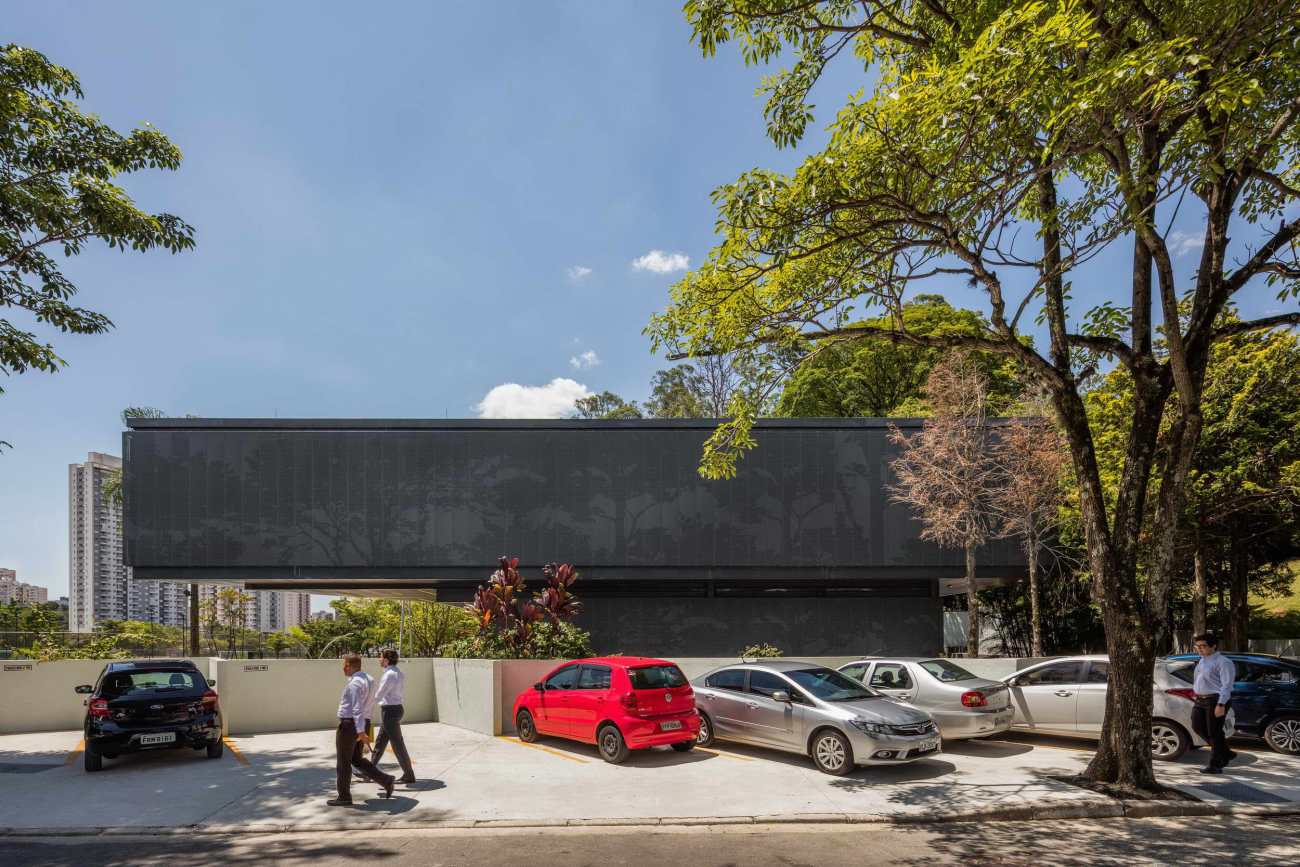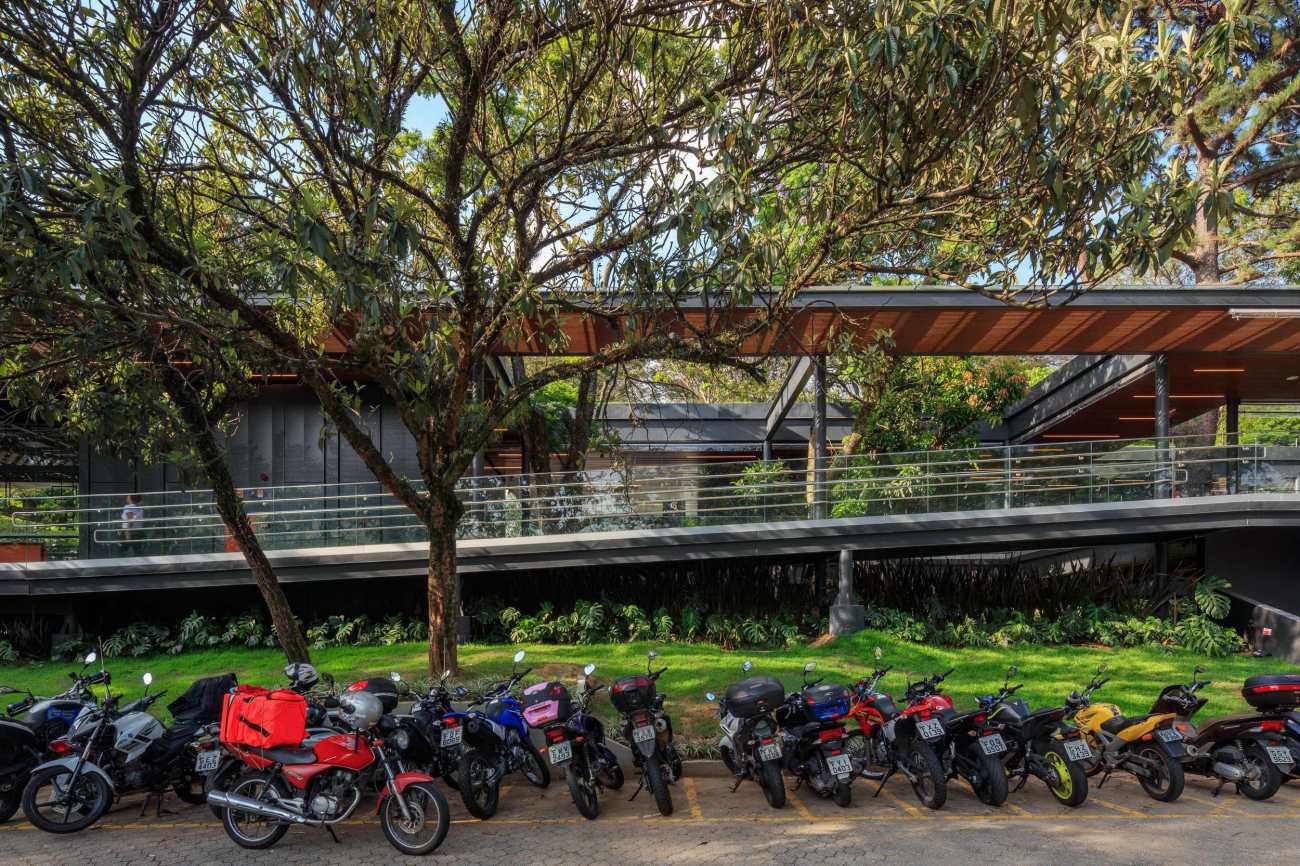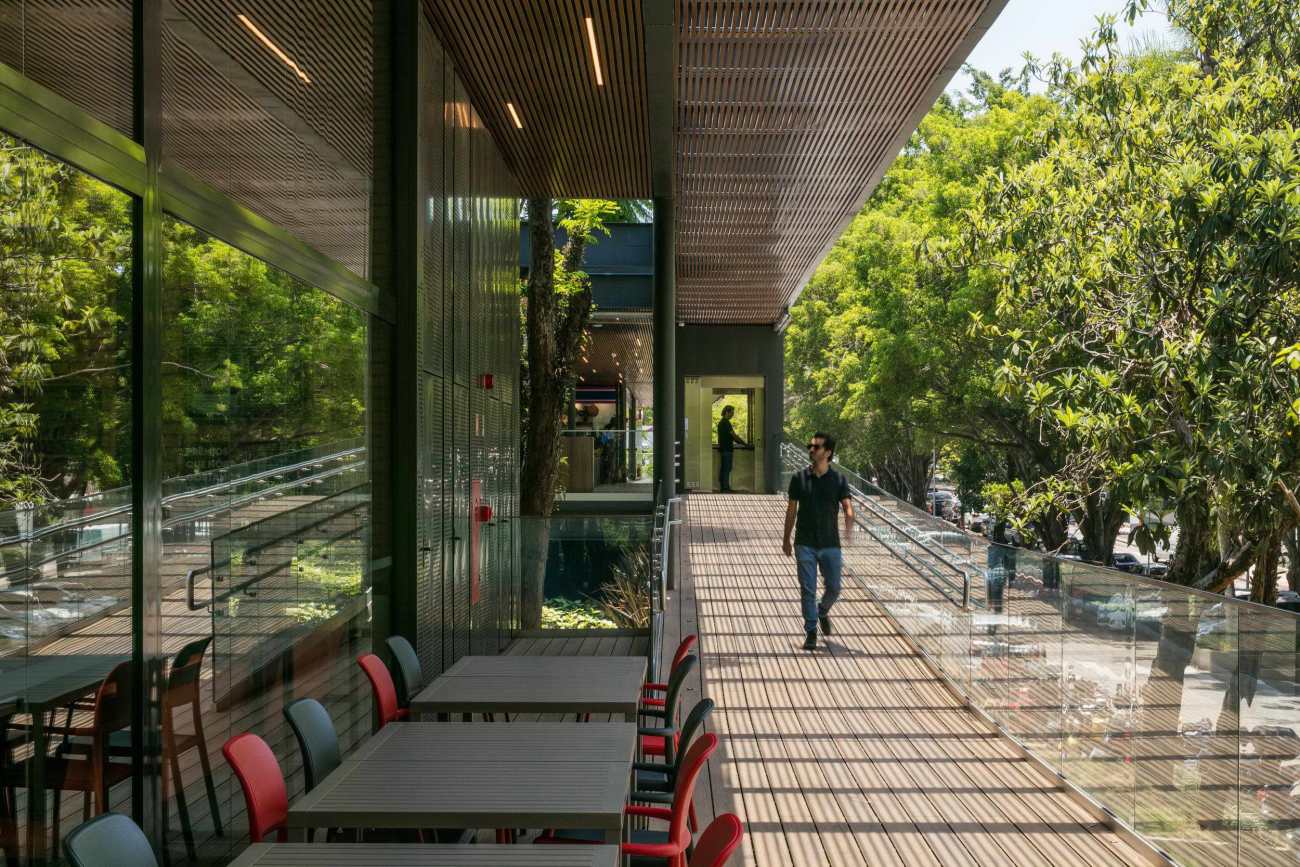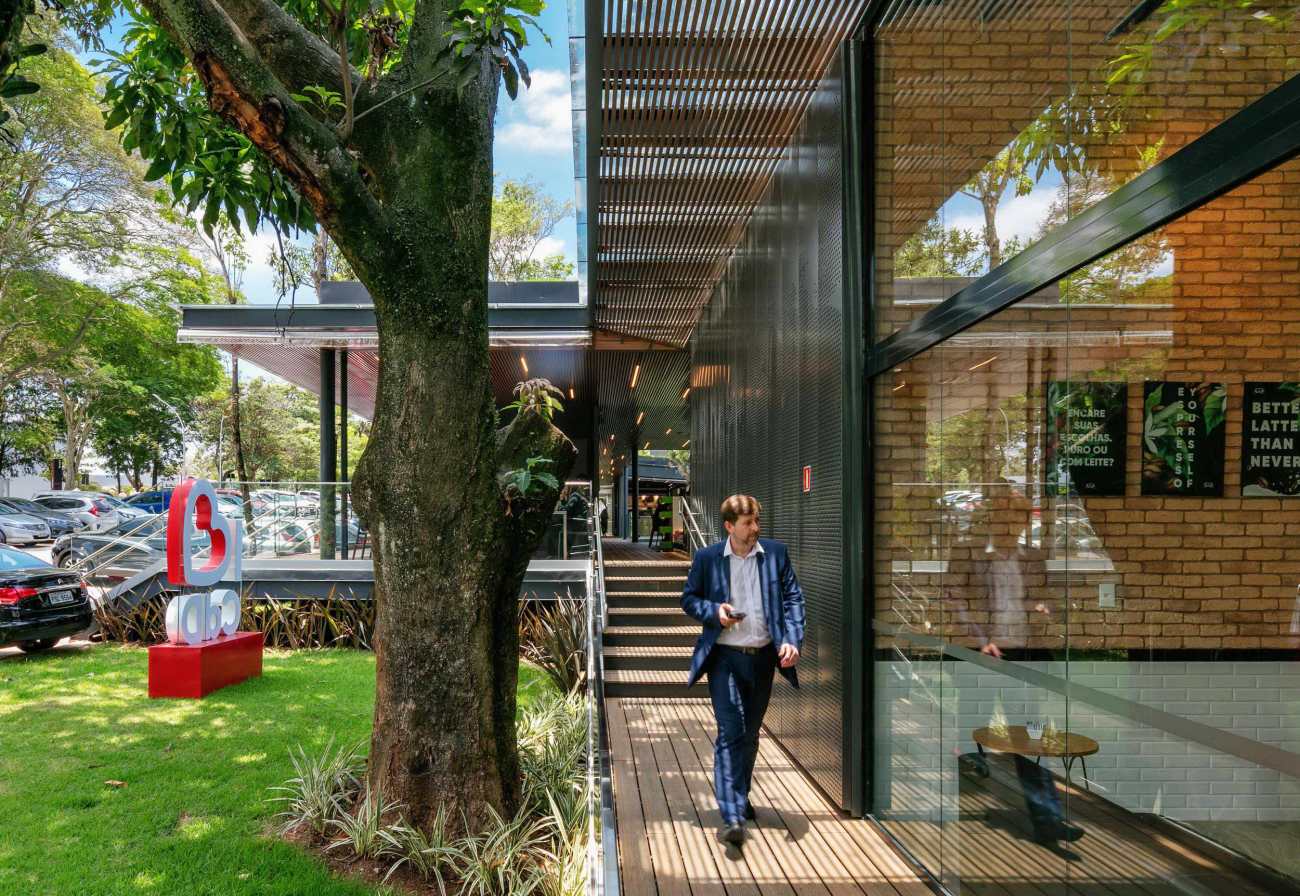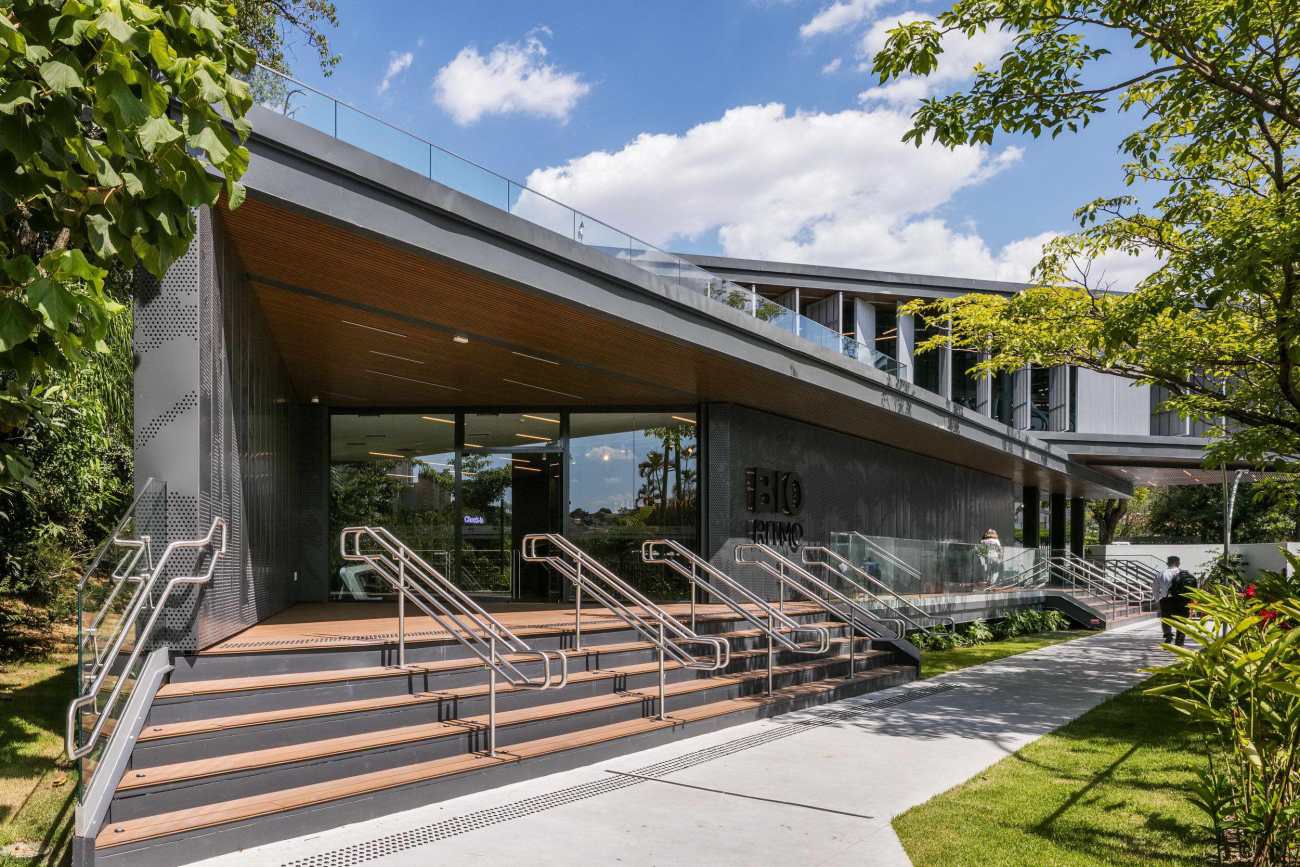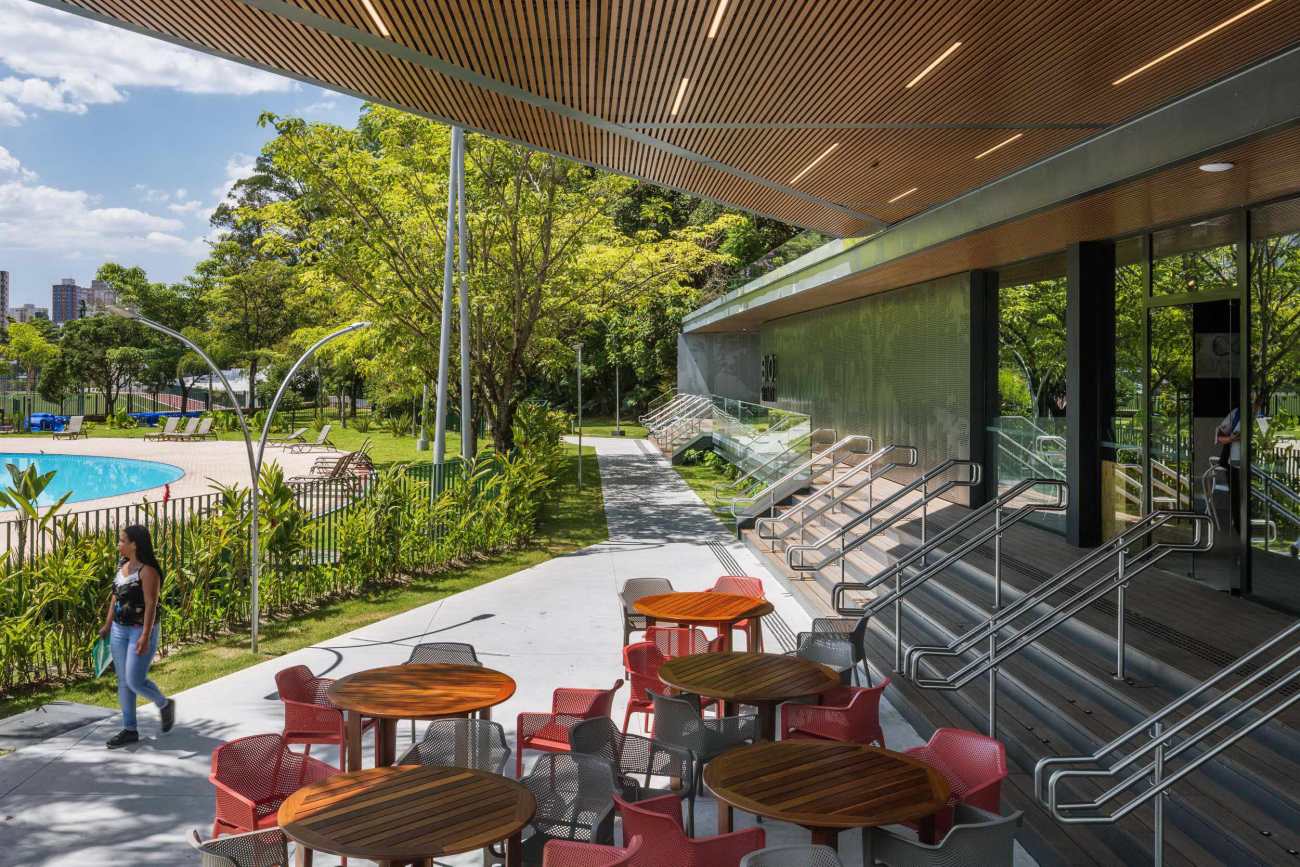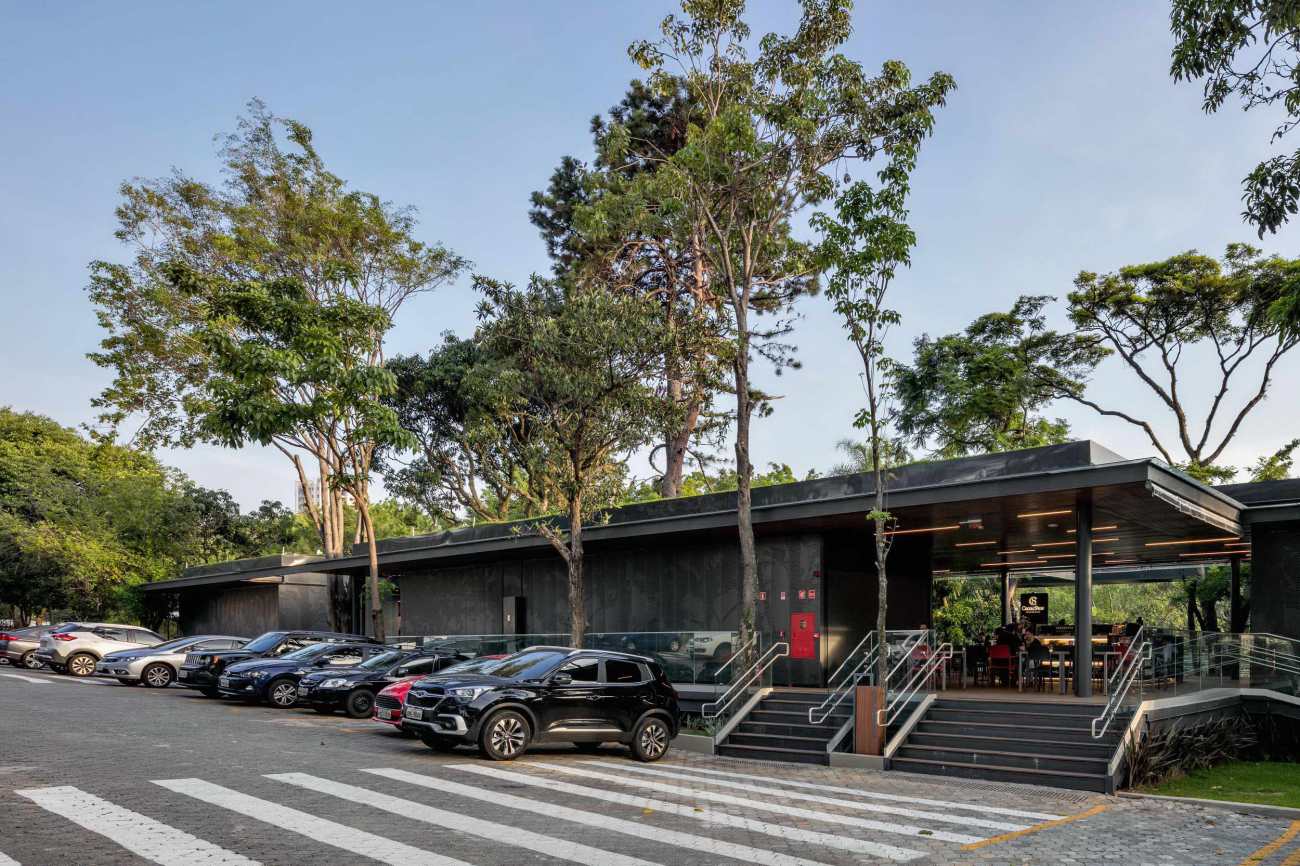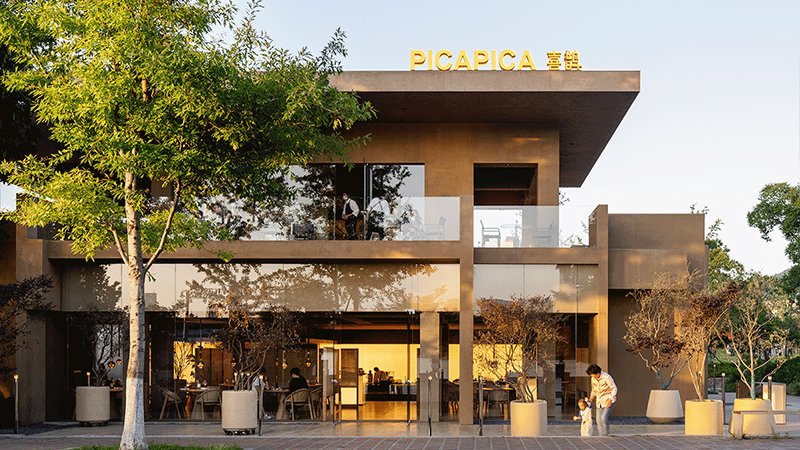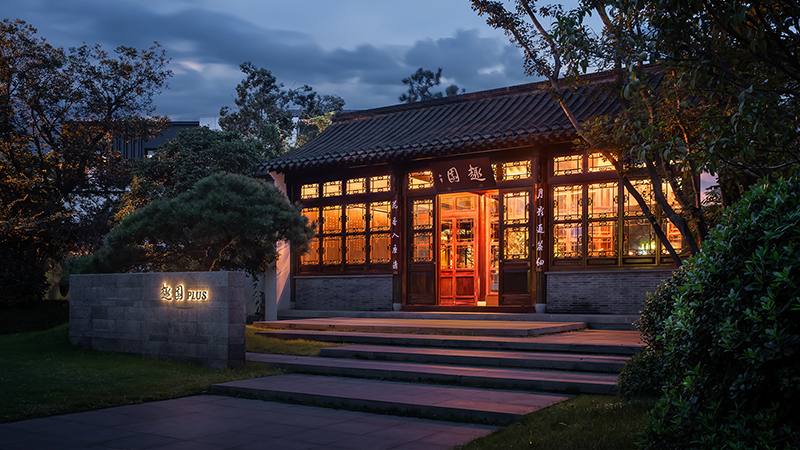| 公司: | DMDV arquitetos | 类型: | 建筑 |
|---|---|---|---|
| 地区: | 巴西 | 标签: | 餐饮空间 |
项目Banco Bradesco总部位于巴西圣保罗的Osasco,该机构总部拥有约12000名员工和几栋行政大楼,但没有为饮食和服务区提供服务的空间。
Located in Cidade de Deus, headquarter of Banco Bradesco in Osasco / SP, the project aims to meet the demand for eating and services area. With a population of approximately 12 thousand employees and several administrative buildings, the headquarter of the institution did not have aimed spaces for such uses.
首先分析试图确定可能的区域,使用了大量的模块化和灵活的体量来实施这个项目,另一个需要注意的点是对停车位的高需求,因此,为了不减少停车位的数量,并尽可能地保留现有的树木延伸,选择在剩余的区域实施。另一个相关前提是根据周边建筑的人口密度来实施项目。
The first analysis made sought to identify possible areas for the implementation of this project which should be modular and flexible. A point of attention set by the bank was the high demand for parking spaces. Therefore, the implementation in the remaining areas was opted in order to not reduce the number of it and in order to preserve as much as possible the existing tree extension. Another relevant premise was to implement the project according to the population density of the surrounding buildings.
项目的出发点遵循了土地占用的前提,以一种微妙的方式,利用现有的地形以及当地的植被。模块被配置成巨大的金属亭子,从地面升起,其周边都是流通区和天井。厨房、储藏室和浴室等辅助区域是不透明的,用穿孔金属板封闭,形成树的轮廓,模仿当地大型植被的阴影。其他区域接受玻璃闭合,可开可合,在视觉上与周围绿地融为一体。其覆盖层由植被层组成,更与当地融为一体,有助于提高热舒适度,减少排水沟和雨水收集的问题。
The starting point of the project follows the premise of a land occupation in a subtle way, taking advantage of the existing topography as well as the local vegetation. The modules are configured as huge metallic pavilions, raised from the ground, with circulation areas and patios all around its perimeter. The supporting areas such as kitchens, storage and bathrooms are opaque, closed with perforated metal plates that shape tree silhouettes, imitating the shadow of the large local vegetation. The other areas receive glass closures that open and close, visually integrating with the surrounding green areas. Its cover is composed of a vegetal layer, which is integrated even more to the location, contributing to thermal comfort and reduce problems of gutters and rainwater harvesting.
三个区域被定义为四个模块的实施。第一个区域是模块1和模块2,服务于当地约70%的人口。模块1位于地形不规则的区域,位于最低层,容纳了洗衣店、鞋店、理发店和咖啡店等小型服务机构的房表。它的盖板被用作生活空间,一个垂直流线核心将其与地势最低层连接起来。一条人行道将其与模块2以及一个大型外部看台连接起来。模块2考虑了带天井的餐厅区域。一个大的内部空间将建筑与当地的植被融为一体。
Three areas were defined for the implementation of four modules. The first area houses modules 1 and 2, which serve approximately 70% of the local population. Located in an area with irregular topography, module 1 is located on the lowest level and houses a room schedule of small services such as laundries, shoe stores, hairdressers and coffee shop. Its cover is used as a living space and a vertical circulation core connects it to the lowest level of the terrain. A pedestrian walkway connects it to module 2, as well as a large external grandstand. Module 2 contemplates areas for restaurants with patios. A large internal void integrates the building with the local vegetation.
模块3容纳了项目的体育设施,该建筑面向综合体的游泳池和球场,底层设有餐厅和一个可容纳1500人的健身房。其不规则的梯形几何形状产生了一个悬臂,标志着建筑的入口。金属穿孔板支撑着西面的阳光,同时也让人们可以看到体育场馆的理想景观。
Module 3 is implemented in the sport sector area of the institution's headquarters. Oriented to the complex’s swimming pools and courts , the building houses a diner on the ground floor and a gym with capacity to serve 1,500 users. Its irregular trapezoidal geometry generates a cantilever that marks the entrance of the building. Metallic perforated sheet metal supports the incidence of sunlight on the West Face as well as allows the desirable view of the sports complex.
模块4在线性地面上延伸,尽管地形不规则。为了保证植被的维护,考虑在亭子里开几个口子,以便在现有的空地上分配房间时间表。地面边缘的倾斜度允许配置一个低于建筑其他部分的中层平台。我们决定保持屋顶水平,配置一个具有较高天花板高度的空间,通过植被中间的坡道与展馆的其他部分相连。房间安排包括餐厅、咖啡店、药房、洗衣房和一个小型市场。
Module 4 extends over a linear ground, although with an irregular topography. To guarantee the maintenance of the vegetation, several openings in the pavilion were considered in order to distribute the room schedule in the existing glades. The declivity of the ground on the edge allowed the configuration of a mid-level plateau below the rest of the building. It was decided to maintain the roof level, configuring a space with a higher ceiling height connected to the rest of the pavilion through a ramp in the middle of the vegetation. The room schedule includes restaurants, coffee shops, pharmacies, laundry and a mini market.
Project name: Architectural modules for eating and sevices area
Company name: DMDV arquitetos
Website: www.dmdv.com.br
Contact e-mail: andre@dmdv.com.br
Project location: Osasco, São Paulo, Brazil
Completion Year: 2019
Building area (m²): 6.000m²
DMDV architects team: André Dias Dantas, Bruno Bonesso Vitorino, Renato Dalla Marta, Victor Vernaglia, Ana Claudia Schad, Aline Pinheiro, Dimitrius Megalomatidis, Nayara Siqueira, Maitê Bittencourt and Thiffani Siani.
Structural Project and Foundation Consulting Firm - LHG
Facilities Project Consulting Firm - Gavazzi Engenharia
Executive Project and Construction - It’s Informov
Photo credits: Nelson Kon
更新日期:2020-12-02 16:38:37
非常感谢 DMDV arquitetos 带来的精彩项目, 查阅更多Appreciations towards DMDV arquitetos for sharing wonderful work on hhlloo. Click to see more works!


